The Robert Redford Conservancy opens the doors of its new home
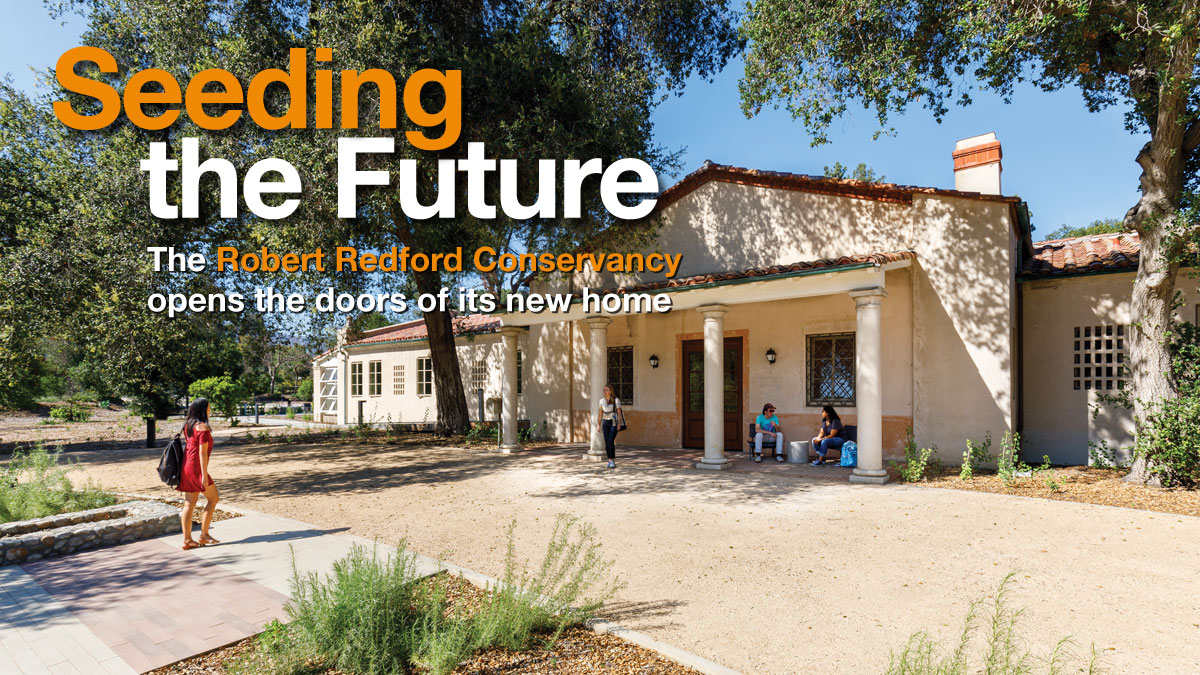
 The Robert Redford Conservancy for Southern California Sustainability at Pitzer College began its first climate justice workshop under a ring of coast live oaks on a rainy Saturday morning in March. There were 35 participants, a daylong agenda and not a whiteboard in sight.
The Robert Redford Conservancy for Southern California Sustainability at Pitzer College began its first climate justice workshop under a ring of coast live oaks on a rainy Saturday morning in March. There were 35 participants, a daylong agenda and not a whiteboard in sight.
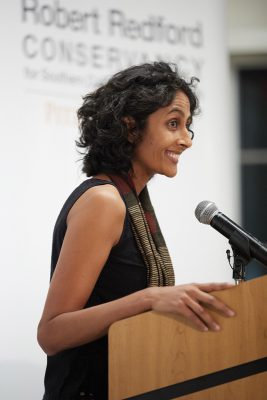
“How we move through space, how we see and how we sense, all impact how we learn from—and in relation to—one another and the natural world.” —Brinda Sarathy, director of the Robert Redford Conservancy
At the Robert Redford Conservancy’s new north campus home, students learn about the environment in the environment. They discuss protecting threatened plant communities on a 12-acre swath of California’s endangered coastal sage scrub habitat. They study sustainable building practices inside a renovated historic infirmary that earned LEED Platinum certification from the US Green Building Council and is on track to become The Claremont Colleges’ first net-zero energy facility.
Brinda Sarathy, director of the Redford Conservancy, describes this immersive learning experience as “embodied cognition.”
“How we move through space, how we see and how we sense, all impact how we learn from—and in relation to—one another and the natural world,” said Sarathy, professor of environmental analysis.
Sarathy kicked off the climate justice workshop by giving thanks to the Tongva elders who had blessed the ancestral land beneath participants’ feet. She looked around the circle of Pitzer students, alumni, faculty and community members as a light spring rain seasoned the air.
“All of you are the seeds,” she said.
And then the workshoppers got to work, analyzing environmental challenges and proposing ways to create, in Sarathy’s words, “more hopeful futures.”
The following pages offer a glimpse into the Redford Conservancy’s first full semester in its renovated home and the start of a new chapter in Pitzer’s storied commitment to environmental justice, education and action.
A Remarkable Renovation
The yearlong, collaborative renovation transformed the abandoned Claremont Colleges infirmary into a showcase for environmental building that meets the US Green Building Council’s LEED—Leadership in Energy and Environmental Design—Platinum certification, the USGBC’s highest rating.
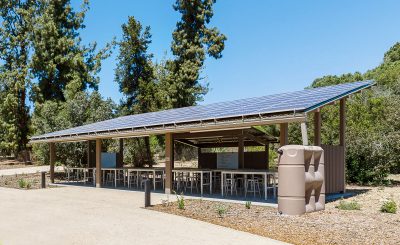 The two outdoor classrooms feature large-capacity rain barrels and solar panels that will produce about 88,000 kWh per year
The two outdoor classrooms feature large-capacity rain barrels and solar panels that will produce about 88,000 kWh per year
With solar arrays generating approximately 88,000 kWh per year, the Robert Redford Conservancy also will be the first net-zero energy building at The Claremont Colleges. To earn Net Zero Energy Building Certification, a building’s on-site renewable generation must meet its annual electricity needs.
Kevin Tyrrell P’18, a partner at QDG Architecture and a member of the Redford Conservancy’s Board of Friends, said that there are very few buildings “not only in California but in the entire country” that achieve both net-zero energy certification and LEED Platinum status.
Naomi Porat P’20, a sustainability and redevelopment expert as well as a member of the Board of Friends, added that meeting net-zero energy standards in a historic structure—the Conservancy building is more than 85 years old—is a “very, very challenging goal.”
“It’s a great achievement for Pitzer to have done that,” Porat said.
Seeding Sustainability
Many of the native plants used throughout the landscape were cultivated at the neighboring Rancho Santa Ana Botanic Garden from seeds found on site. Redford Conservancy Director Brinda Sarathy consulted with both biologists and Tongva elders to ensure that plantings were indigenous to the area and culturally significant for the land’s Native people.
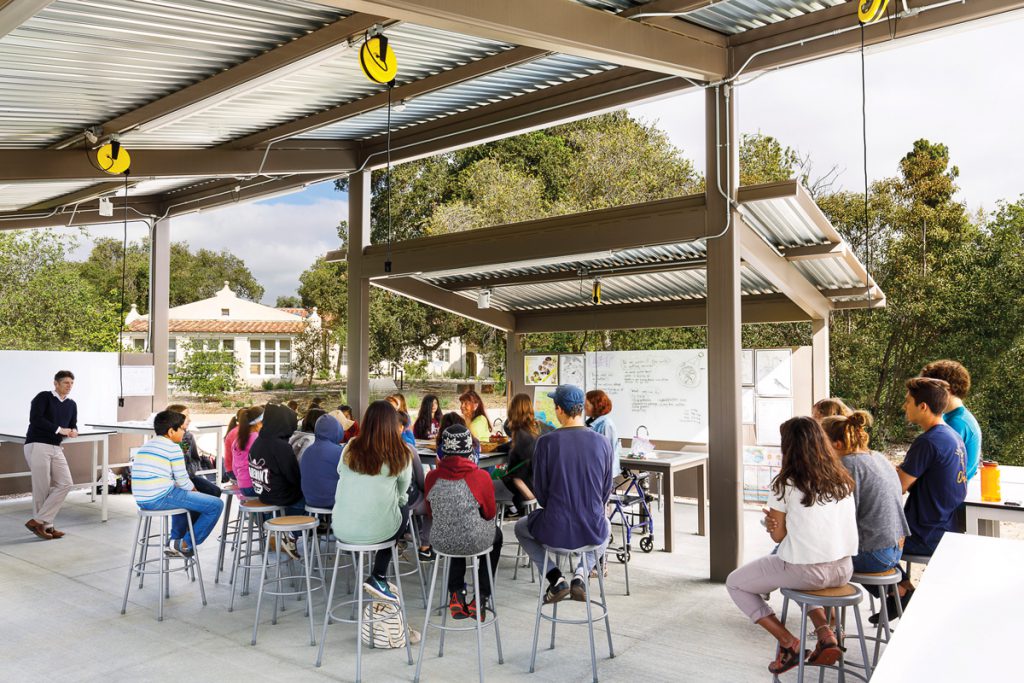 Tongva Elder Barbara Drake leads a local elementary school class with help from Claremont Colleges students
Tongva Elder Barbara Drake leads a local elementary school class with help from Claremont Colleges students
Public Education
The Rockefeller Brothers Fund awarded the Robert Redford Conservancy a $50,000 two-year grant to increase public understanding of climate justice and find creative, effective ways to address the global crisis. The first symposium funded by the grant, “Climate Change, Climate Justice: Organizing in the Face of a Changing Planet,” brought climate experts and activists to campus in February to explore the possibilities of a fossil fuel-free future.
Fellowship for the Future
Robert Redford Conservancy fellows are a select group of Pitzer students dedicated to addressing environmental issues through education and action. Since the fellowship launched in spring 2015, more than 25 fellows have led programs, such as “toxic tours” that illustrate environmental injustice and the disparate impacts of pollution on communities around Los Angeles and the Inland Empire.
RRC Friends Forever
Established in spring 2016, the Robert Redford Conservancy Board of Friends serves as a sounding board for initiatives, opportunities and strategies. Composed largely of Pitzer parents and alumni with expertise in environmental sustainability, the Board of Friends introduces students to career opportunities and provides a network of mentors in environmental fields.
Native Hosts
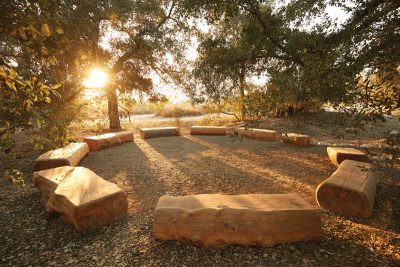 The Oak Council Ring, one of two talking circles at the Redford Conservancy
The Oak Council Ring, one of two talking circles at the Redford Conservancy
The Redford Conservancy partners with members of the Tongva community, Native Americans whose ancestral land includes the Los Angeles basin. In March, Tongva elders Barbara Drake and Glenn Miller led a celebration of the spring equinox’s promise of “rebirth, rejuvenation and renewal.” Earlier in the semester, Pitzer relocated a sign by the artist Edgar Heap of Birds from its main campus to the Redford Conservancy. His “Native Hosts” signs bear Tongva names of Native American sites in the region. “It’s a humble way to acknowledge the Tongvan world that we’re standing on right now,” said Heap of Birds.
Bringing Clean Energy into Focus
Director James Redford, son of the Robert Redford Conservancy’s namesake, brought his award-winning documentary HAPPENING: A Clean Energy Revolution to campus on March 2. The film follows Redford as he travels across the country to explore renewable energy initiatives. During the introduction to the film, Redford said he was “flattered and honored to have such a meaningful association with Pitzer.”
Full Circle
Pitzer alumnae Jess Grady-Benson ’14 and Morissa Zuckerman ’16, along with two other young environmental activist-educators, led the Redford Conservancy’s first all-day workshop on climate-justice advocacy in March. Zuckerman, who works for the Sierra Club, opened the day with an overview of the climate crisis. Grady-Benson asked participants, “What fuels your fire to fight for climate justice?”
Sneak Peek
In October 2017, Pitzer’s Board of Trustees previewed the Redford Conservancy’s renovated building. Trustee Susan Pritzker P’93, who chaired the board from 1998 to 2005, said the Redford Conservancy would “anchor and amplify the programs that Pitzer has been doing forever in the area of sustainability.” She and her husband, Nicholas Pritzker, made a $10 million gift to help establish the Conservancy in 2012.
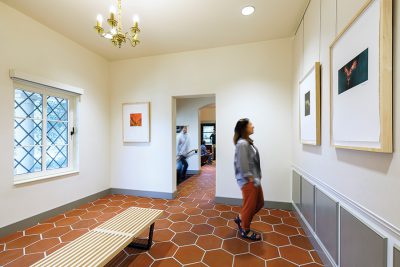 EARTH, by Professor Paul Faulstich ’79, P’15, opens
EARTH, by Professor Paul Faulstich ’79, P’15, opens
Art in the Elements
The Redford Conservancy builds on Pitzer’s long history of exploring the connection between art and the environment. On April 28, two art exhibits opened at the Conservancy: EARTH, by Professor of Environmental Analysis Paul Faulstich ’79, P’15, and ephemeral natures, a permanent art exhibit co-curated by Associate Professor of Media Studies Ruti Talmor and Conservancy Director Brinda Sarathy.
View additional videos, photos and additional information about the Conservancy.